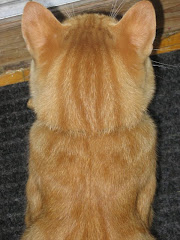
Friendly Bacteria
Text and Photography By: Füsun Atalay ~ © 2004
Yogurt is known and consumed in almost all parts of the world. However, Mediterranean countries use a lot in their cuisine. They usually eat plain, unsweetened yogurt with main dishes such as spinach or wine leaves stuffed with meat and rice. It is also added to salads or used to make traditional “meze” (appetizers).
There are generally three types of yogurt on the market: regular, low-fat and non-fat. The main difference between them is the fat content before addition of flavour.
To be yogurt, it must contain active and living cultures composed of unique living micro-organisms which are responsible for many health and nutritional benefits. These friendly bacteria become an intrinsic part of live yogurt, when it is homemade and fermented for at least 24 hours.
Since it’s a fresh dairy product, yogurt must be stored in the refrigerator. Heat-treated yogurt has a longer shelf life but, as heat processing destroys the cultures, it fails to supply the nutritional benefits of yogurt with live cultures. To get the most health benefit from yogurt, look for a “live and active cultures” seal on the label.
Yogurt made from whole milk has at least 3.25 per cent milk fat. Low-fat yogurt made from low-fat milk, reduced-fat milk or part-skim milk has between 0.5 and 2 per cent milk fat. Non-fat yogurt must contain less than 0.5 per cent milk fat.
In 1965, the term “probiotics” (the opposite of antibiotics) was coined to describe substances that favour the growth of beneficial micro-organisms in the body. Probiotics help to digest food in the gut the same way they partially digest fats, proteins and carbs in milk to create yogurt.
Because yogurt cultures flourish in the digestive tract, their natural antibiotic effect helps combat infections and protect the stomach lining from toxins. Containing high levels of natural enzymes, yogurt can also prevent diarrhea and dysentery — especially in infants. Itself an antibiotic, yogurt is known to help prevent or control diarrhea caused by bacteria or by taking antibiotic drugs.
Probiotics appear to be useful in treating a variety of gastrointestinal problems, including inflammatory bowel disease (such as Crohn’s disease or ulcerative colitis), ulcers and irritable bowel syndrome. Scientists now believe the live cultures in yogurt are exceptional probiotics that are beneficial to health, with research show- ing that live yogurt can stimulate the human immune system as well as kill harmful bacteria.
Yogurt suppresses activity that converts harmless chemicals into carcinogenic agents. Thus, it is credited with helping in the prevention of colon cancer. It is also known to discourage yeast infections such as Candida albicans and vaginal thrush.
Live yogurt is an outstanding source of protein, calcium, potassium, phosphorus, vitamin B6, B12, niacin, folic acid and potassium. As a source of calcium, yogurt can even help prevent osteoporosis.
Many doctors recommend live yogurt for patients on antibiotics to replenish good bacteria, and some argue that live yogurt cultures may also reduce the occurrence of colds, allergies and hay fever.
Finally, according to a new study published in The Lancet, the British Medical Association Journal, treating pregnant women with “good bacteria” such as Lactobacillus in yogurt may prevent thousands of children from contracting asthma by strengthening the vulnerable immune systems of babies before birth.
Refreshing yogurt drinks are made by combining plain yogurt, salt and water — and served mostly with meat kebabs. Fried vegetables such as eggplant, green pepper or zucchini are eaten with yogurt to which salt and crushed garlic have been added. The popular cucumber and yogurt salad is prepared with yogurt, cucumbers, fresh or dried mint, garlic, salt and a swirl of olive oil.
Before you buy yogurt, check the label for the sell-by date. Plain, unflavored yogurt in larger containers is the best buy and the most versatile. It’s handy for salad dressings, dips, sauces, desserts and baked goods. You can mix it with fruit or jams for a flavoured version.
You can integrate this friendly bacteria in a variety of ways into your diet and to keep your mind and body strong, try these healthier alternatives:
• Dips made with yogurt instead of sour-cream are just as tasty at much less fat calories.
• Using yogurt to replace mayonnaise or dressings adds a healthy, low-fat tang to your salads.
• Replace milkshakes with frozen yogurt or mixed fruit yogurt smoothies.
• Yogurt cheese in place of cream cheese is quite the trendy way to ingest calcium.
• Yogurt, due to its high acidity, makes a deliciously tenderizing marinade for meat and poultry.
• Use instead of sour cream to reduce the fat in muffins and coffee cake recipes and still maintain the desired moistness.
A word of caution: Heating yogurt to high temperatures destroys the beneficial bacteria that it contains. To preserve this good bacteria, avoid adding yogurt to a hot mixture. Instead, stir a few tablespoons of the hot food into the yogurt, tempering it gradually. Then stir the warmed yogurt back into the hot mixture such as soups or sauces.
• • •
• • •
So, are you ready to add more yogurt to your diet? Would you like to make it at home? It’s simple.
Homemade Yogurt ~ The way my Father used to make ~
4 cups 2 per cent milk
1/2 cup instant powdered milk
1 Tbsp. honey
1/2 cup plain yogurt at room temperature (for starter culture)
4 cups 2 per cent milk
1/2 cup instant powdered milk
1 Tbsp. honey
1/2 cup plain yogurt at room temperature (for starter culture)
Pour milk into a saucepan and whisk in powdered milk and honey. Place over medium heat and bring to 50 C on an instant read thermometer. Once milk has reached 50 C, pour into a plastic container, reserving half a cup. Whisk in the reserved half-cup into the yogurt until the mixture is smooth and of buttermilk consistency.
Add this back to the milk mixture.
Place container in a draft-free place (a cold oven is good) with a heating pad set at medium, or a blanket wrapped around it to keep its temperature as close to 45 degrees C as possible. Leave the mixture to ferment for five to eight hours or overnight.
After fermentation is complete, place in the refrigerator for eight hours. You can save a half cup of this yogurt as a starter for the next batch.
Your homemade yogurt is now ready for consumption or for using in the following delicious recipes.
First two come from Taste of Home Cooking magazine:
Very Berry Smoothie
1 cup fresh or frozen berries
1 cup plain low-fat, or vanilla yogurt
1 cup orange juice
4 ice cubes
1 cup plain low-fat, or vanilla yogurt
1 cup orange juice
4 ice cubes
Place ingredients into blender and mix on high until smooth. Garnish with a fresh strawberry. Makes 2 smoothies.
Pineapple Smoothie
1 20-oz. can unsweetened
pineapple chunks
1 cup plain low-fat yogurt
2 tsp. vanilla extract
1-2 Tbsp. liquid honey
pineapple chunks
1 cup plain low-fat yogurt
2 tsp. vanilla extract
1-2 Tbsp. liquid honey
Drain pineapple, reserving 3/4 cup of the liquid. Freeze the chunks. In a blender combine frozen pineapple chunks, reserved liquid, honey, vanilla and yogurt. Blend until smooth. Pour into glasses and garnish with a mint sprig. Makes 5 servings.
• • •
• • •
Blueberry Yogurt Muffins
2 cups all-purpose flour
1 tsp. baking soda
1 tsp. baking powder
1/4 cups sugar
1/2 tsp. salt
1 tsp. cinnamon
2 eggs
1 1/4 cup plain yogurt
1/4 cup butter, melted
1 Tbsp. lemon zest, grated
1 cup fresh or frozen blueberries
1 tsp. baking soda
1 tsp. baking powder
1/4 cups sugar
1/2 tsp. salt
1 tsp. cinnamon
2 eggs
1 1/4 cup plain yogurt
1/4 cup butter, melted
1 Tbsp. lemon zest, grated
1 cup fresh or frozen blueberries
Preheat the oven to 375 F and butter the muffin tins. In a mixing bowl, stir together the flour, baking soda, baking powder and salt. In another bowl, combine the sugar, yogurt, eggs, melted butter, cinnamon and lemon zest. Beat until thoroughly mixed. Add the dry ingredients and mix just until blended. Do not over mix. Fold in blueberries gently. Spoon the batter into the greased muffin tins, filling each cup about two-thirds full. Bake for approximately 15 minutes, or until the tops are browned, and a toothpick inserted into the middle comes out clean. Let cool in the pan before serving warm. Makes 1 dozen.
• • •
This is a cool and refreshing accompaniment to spicy foods such as curries.
• • •
This is a cool and refreshing accompaniment to spicy foods such as curries.
Raita
2 cups plain yogurt
1 seedless English cucumber, peeled
1 tsp. salt
1/2 tsp. ground cumin
Sprig of fresh mint, coarsely chopped, plus more for garnish
1 seedless English cucumber, peeled
1 tsp. salt
1/2 tsp. ground cumin
Sprig of fresh mint, coarsely chopped, plus more for garnish
Place yogurt in a medium-size mixing bowl. On the large holes of a box grater, grate cucumber directly into the bowl. Season the mixture with salt, cumin, and mint, stirring well. Chill the raita slightly. Garnish with chopped mint, and serve.
• • •
Here’s another recipe from Taste of Home Cooking magazine.
• • •
Here’s another recipe from Taste of Home Cooking magazine.
Coffee Cake
1 cup butter, softened
2- 2/3 cup sugar, divided
2 tsp. vanilla extract
4 large eggs
3 cups all purpose flour
2 tsp. baking powder
1 tsp. baking soda
2 cups plain yogurt
3/4 cup chopped walnuts (or pecans)
2 Tbsp. cinnamon
2- 2/3 cup sugar, divided
2 tsp. vanilla extract
4 large eggs
3 cups all purpose flour
2 tsp. baking powder
1 tsp. baking soda
2 cups plain yogurt
3/4 cup chopped walnuts (or pecans)
2 Tbsp. cinnamon
Grease a 25-centimetre tube pan, set aside. Turn oven on to 350 F. Combine nuts, 3/4 cup of the sugar and cinnamon in a small bowl and set aside. Combine flour, baking powder, baking soda and salt; set aside.
Cream butter with 2 cups sugar until fluffy. Add vanilla. Add eggs one at a time, beating well after each addition.
Cream butter with 2 cups sugar until fluffy. Add vanilla. Add eggs one at a time, beating well after each addition.
Add the flour mixture alternately with yogurt, beating just enough after each addition to keep the batter smooth. Spoon one-third of this batter into the prepared pan. Sprinkle one-third of the cinnamon-nut mixture over the batter in pan. Repeat layers two more times.
Bake the cake for 70 minutes or until it tests done. Cool for 15 minutes before removing onto a wire rack to cool completely.
~~~~~~~~~~~~~
Copyrighted Material ~ All Rights belong to Füsun Atalay ~ Copyright © 2004








































No comments:
Post a Comment